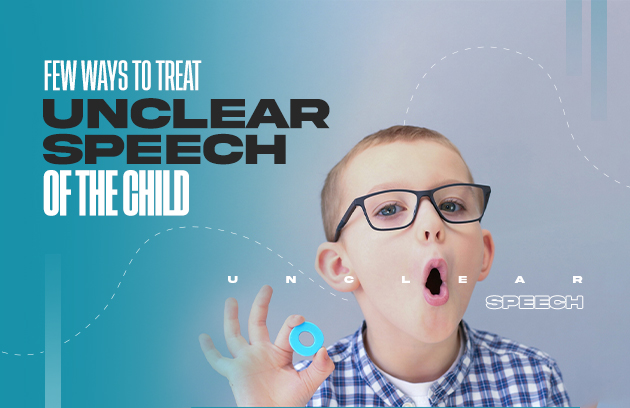Few Ways to Treat Unclear Speech of the Child
Most children start babbling at the age of one and start talking and constructing sentences. About 1 in 12 children has some sort of speech disorder, which can cause broken, unintelligible, or unclear speech. But even if your child doesn’t have a speech disorder, it’s not uncommon for children to speak in ways that are hard to understand.
There are some kinds of speech disorders, like dyspraxia or apraxia, which sometimes parents fail to understand. However, these children with such disorders will not likely grow out of them unless they go through speech therapy.
With time and proper therapy, the expert’s child’s speech will improve and there will be no difficulties or errors in understanding. The child will also be able to communicate verbally.
Helping the child to develop the speech muscles
The process of getting your toddler to talk may be both enjoyable and challenging for parents. The physical element of communication is one part of speech that many parents presume. The muscles that need to be strengthened for this technique are those in your child’s tongue and lips. Utilizing household items will help your children articulate spoken sounds more clearly. One such example is the mirror, which enables the child to watch how their mouth moves while speaking. However, to stimulate blowing, you can use cotton wool, bubble wrap, or straws.
Make sure to listen to them first
Before you act or exhibit something, speak first. By listening to your speech, your child will be able to strengthen their listening abilities. Only after your youngster has had a chance to listen to the content should you introduce visual cues to aid comprehension. This aids in your child’s brain’s auditory region development, which they will use to check their own speech.
Making use of songs and rhymes
Children tend not to be interested in you while you are talking, but when you play their favourite songs and music. At our Asha speech and hearing clinic, our therapist helps parents by encouraging them to motivate their children and participate in various songs while pausing them so that they get a chance to sing along.
We perform different activities with children by showing them videos, cartoons, etc. We sometimes pause the video at some points and ask the children to repeat what they heard or understood. This way, they can easily indulge in this therapy without getting bored.
Creating the Need to Communicate
Parents should always try to create the need to talk to their children. To make them need you and talk to you, you can give them something they do not like so that they can come to you and ask for the thing they like. You should always wait for the child to communicate for themselves. This will help you to understand if they are satisfied with their needs or want something else. The next step is to show your child how to communicate by giving them more opportunities to speak instead of merely talking to them.
Ask them different questions with options
Ask questions that have several possible answers. This provides you with the opportunity to pronounce specific words that target the targeted sound twice, giving your child two opportunities to hear it and a chance to practise pronouncing it.
Conclusion
Uncertain speech can have a substantial impact on how successfully a kid interacts with adults and their classmates, as well as how well their language and social skills develop, depending on the severity of the challenges. But mastering proper speech takes time, just as it does to learn to talk. A child who is having trouble being understood may feel irritated which could result in behavioral problems. Learning to speak clearly takes time, just like learning to converse does. The development of your child’s speech won’t happen overnight; it will take time, effort, and patience on both of your parts.

